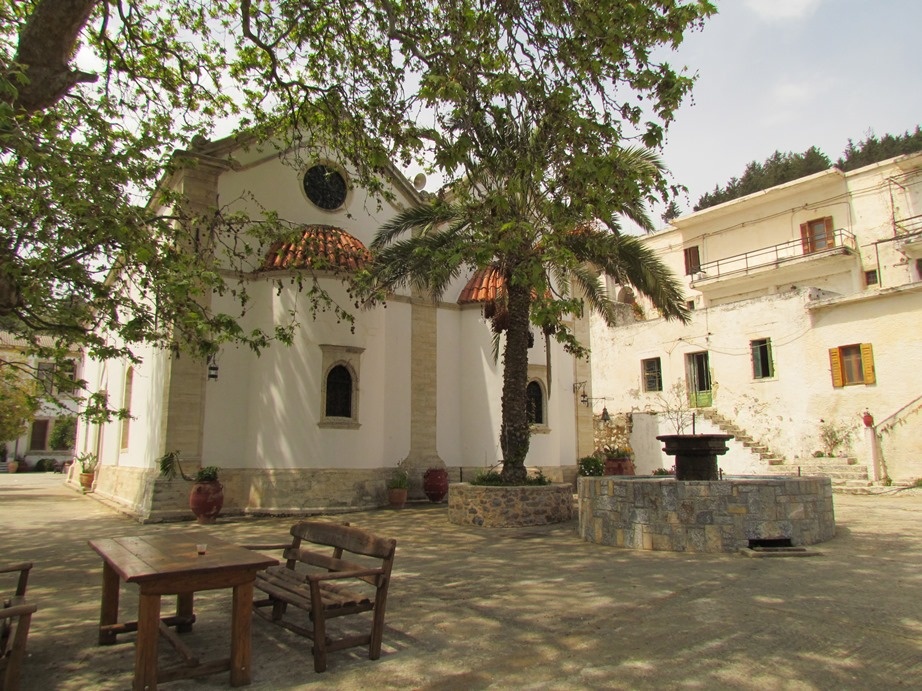
One of the most characteristic features of Cretan culture and human geography is religion’s dominance over the landscape through the presence of hundreds of (mostly) small churches that can be found in every niche and corner of the island.
In-keeping with a practice that goes back thousands of years, inhabitants of the area would choose as their place of worship locations that they believed exuded a distinct energy, which were usually associated with the elements: hilltops and mountain peaks, springs, steep gorges, and river estuaries. In many cases, Christian chapels were erected on the sites of earlier, ancient places of worship, continuing humankind’s efforts to commune with the divine.
There is an astounding number of churches to be seen whilst touring the region of Archanes-Asterousia, even in the most remote and inaccessible locations. Many of these were once hermitages, used by monks who practised asceticism.
Multiple churches can also be found in each village, whatever its size. All of them are considered important, and one is usually dedicated to the patron/matron saint and protector of the village. Outside the limits of the hamlets and villages, little picturesque chapels dot the landscape, some restored and others weathered by the elements and the passing of time.
Suggested Religious Itineraries
For those who wish to explore the municipality whilst focusing on religious monuments and events, we recommend that trips be planned either around a specific time of year, to coincide with the great feasts of Christianity, or around specific locations.
For trips planned around a specific time of year, we recommend:
- Easter: The greatest of Eastern Orthodox Christianity feasts. During Holy Week, religious rituals and church ceremonies can be enjoyed at all villages throughout the municipality. Epanosifis Monastery is a good choice for Holy Friday. After the procession of the Epitaphios, everyone heads first to the cemetery and then to the sheepfold, and the Epitaphios is held high to allow the sheep to pass under it. Also in the area and very much worth experiencing are the celebrations on Saint George’s day, held either on Easter Monday or on 23 April, if it is after Easter. These are also held at Epanosifis Monastery and feature ‘georgalidika’ or Mesara horses—a rare Cretan breed.
- Dekapentavgoustos (lit. 15 August, the Dormition of the Virgin): This is an important day of celebration commemorating the Dormition of the Theotokos (Mother of God). Virgin Mary is honoured across scores of chapels and churches of all sizes, in villages and across the countryside. Artoklasies (lit. Breaking of the Bread, a service during which priests bless and break five loaves of bread), liturgies, special masses, festivities, and numerous events are held throughout the entire region and, since it is in the summer, they can be combined with swimming in the sea and exploring the mountains. In the municipality’s central region, just outside the hamlet of Agios Vasileios, the celebrations at Spiliotissa Convent—one of the rare occasions that the devout convent opens its doors to the public—should not be missed. The convent’s location, nestled in the verdant Spiliotissa Gorge, offers a breeze of cool air in the summer heat, as well as surroundings of splendid natural beauty.
For trips planned around specific places, we recommend:
A) Theme: ‘The Holy Mountain of Crete’. Tours of the Asterousia Mountain Range, with its monastic communities and scores of chapels that seem to just sprout out of the landscape, following the faithful in their rites on various days of the year.
- Route A1 (driving): Charakas > Paranymfoi > Agiou Pavlou (St. Paul) Monastery > Treis Ierarches (Three Hierarchs) Monastery in Lousoudi > Koudoumas Monastery > Agia Moni
- Route A2 (driving & hiking): Charakas > Paranymfoi > Agiou Pavlou (St. Paul) Monastery > (3-4 hours hiking) > Koudoumas Monastery
- Route A3 (driving): Pyrgos > Treis Ekklisies (Three Churches Monastery)
- Route A4 (driving): Pyrgos > Mesochorio (Monastery) > Achentrias > Agiou Nikita (St. Nikitas) Monastery and the palm forest.
- Route A5 (driving & hiking): Pyrgos, Mesochorio (Agiou Dimitriou [St. Demetrius] Monastery) > Achentrias > Agiou Nikita (St. Nikitas) Monastery and the palm forest > Maridaki (Monastery) > (30-60’ hiking) > Tsoutsouras (Panagia Monastery)
B) Theme: the Mediterranean region of the Municipality of Archanes - Asterousia
- Route B1 (driving & hiking): Heraklion > Kato Archanes > Fourni > hike to Panagia Karydakiani (Virgin Mary of Karydaki) and then back to the car > (continue by road to) Pano Archanes > western foot of Mt. Juktas, just below ‘Kelia ton Kalogradon’ (Monks’ Cells) (care must be taken as the path that leads there is hard to discern) > (by road to) Mt. Juktas’ peak – the Sotiras Christos (Christ the Saviour) Monastery.
- Route B2 (driving): Heraklion > Peza > Agios Vasileios > Spiliotissa Convent > Houdetsi > Epanosifis Monastery.
- Route B3 (driving & hiking): Heraklion > Peza > Agios Vasileios > Houdetsi (from here, hike half an hour through Spiliotissa Gorge to reach the Spiliotissa Convent and then head back to the car).



